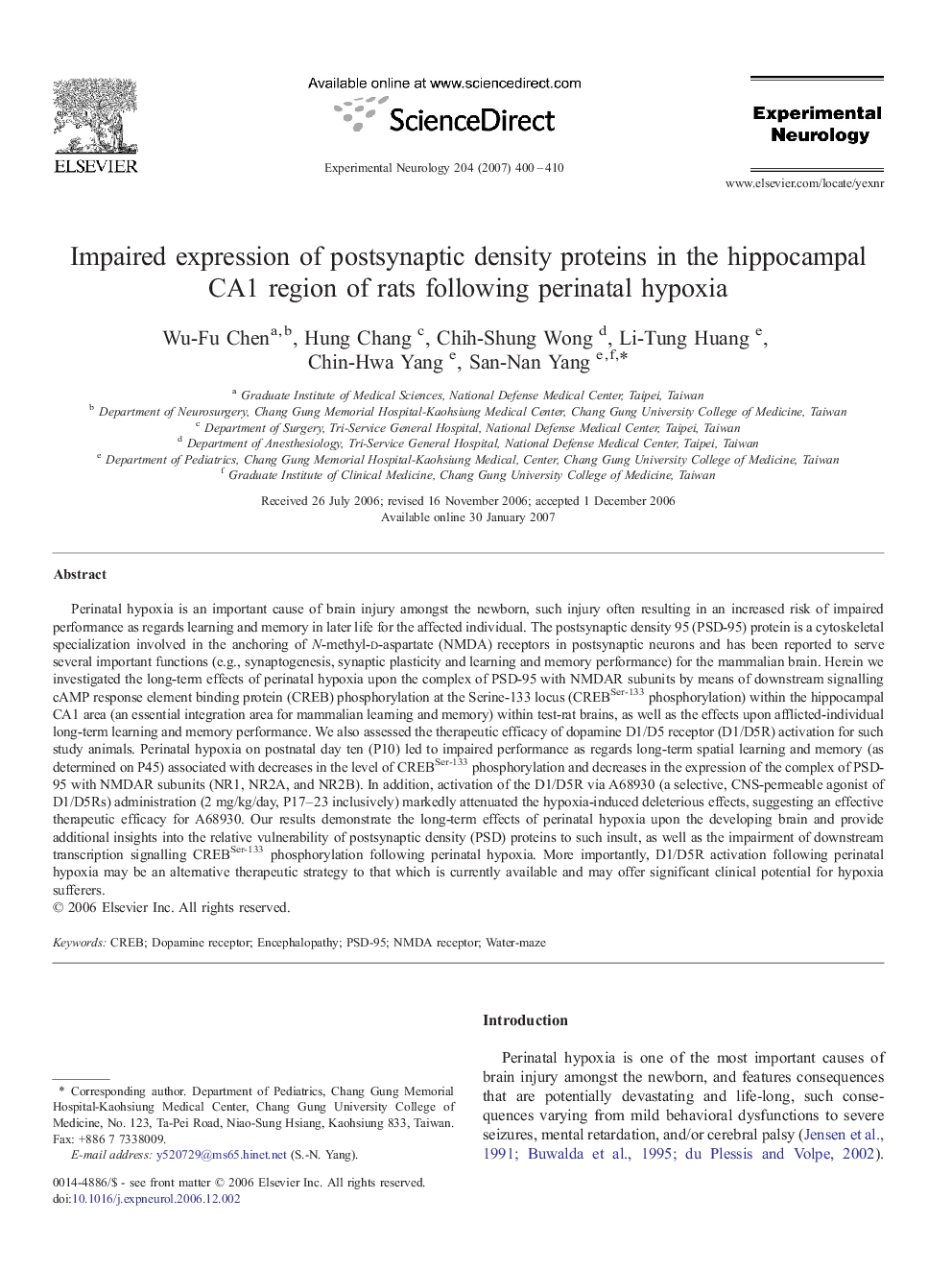| Article ID | Journal | Published Year | Pages | File Type |
|---|---|---|---|---|
| 3057193 | Experimental Neurology | 2007 | 11 Pages |
Abstract
Perinatal hypoxia is an important cause of brain injury amongst the newborn, such injury often resulting in an increased risk of impaired performance as regards learning and memory in later life for the affected individual. The postsynaptic density 95 (PSD-95) protein is a cytoskeletal specialization involved in the anchoring of N-methyl-d-aspartate (NMDA) receptors in postsynaptic neurons and has been reported to serve several important functions (e.g., synaptogenesis, synaptic plasticity and learning and memory performance) for the mammalian brain. Herein we investigated the long-term effects of perinatal hypoxia upon the complex of PSD-95 with NMDAR subunits by means of downstream signalling cAMP response element binding protein (CREB) phosphorylation at the Serine-133 locus (CREBSer-133 phosphorylation) within the hippocampal CA1 area (an essential integration area for mammalian learning and memory) within test-rat brains, as well as the effects upon afflicted-individual long-term learning and memory performance. We also assessed the therapeutic efficacy of dopamine D1/D5 receptor (D1/D5R) activation for such study animals. Perinatal hypoxia on postnatal day ten (P10) led to impaired performance as regards long-term spatial learning and memory (as determined on P45) associated with decreases in the level of CREBSer-133 phosphorylation and decreases in the expression of the complex of PSD-95 with NMDAR subunits (NR1, NR2A, and NR2B). In addition, activation of the D1/D5R via A68930 (a selective, CNS-permeable agonist of D1/D5Rs) administration (2Â mg/kg/day, P17-23 inclusively) markedly attenuated the hypoxia-induced deleterious effects, suggesting an effective therapeutic efficacy for A68930. Our results demonstrate the long-term effects of perinatal hypoxia upon the developing brain and provide additional insights into the relative vulnerability of postsynaptic density (PSD) proteins to such insult, as well as the impairment of downstream transcription signalling CREBSer-133 phosphorylation following perinatal hypoxia. More importantly, D1/D5R activation following perinatal hypoxia may be an alternative therapeutic strategy to that which is currently available and may offer significant clinical potential for hypoxia sufferers.
Related Topics
Life Sciences
Neuroscience
Neurology
Authors
Wu-Fu Chen, Hung Chang, Chih-Shung Wong, Li-Tung Huang, Chin-Hwa Yang, San-Nan Yang,
